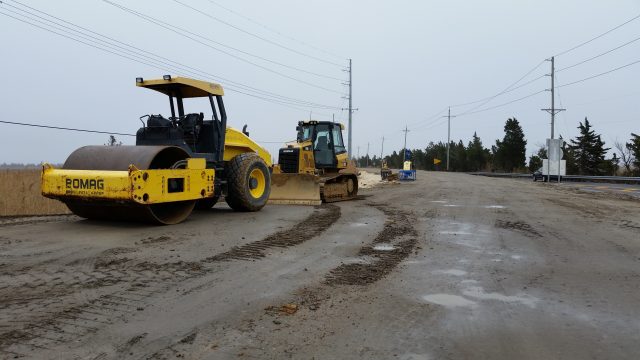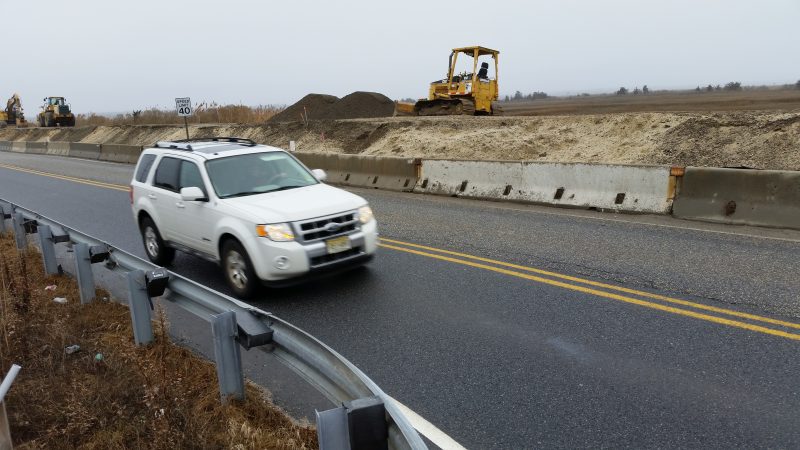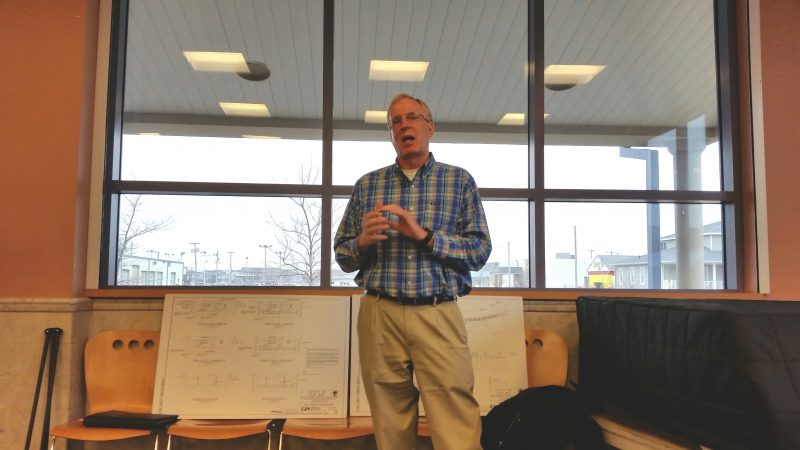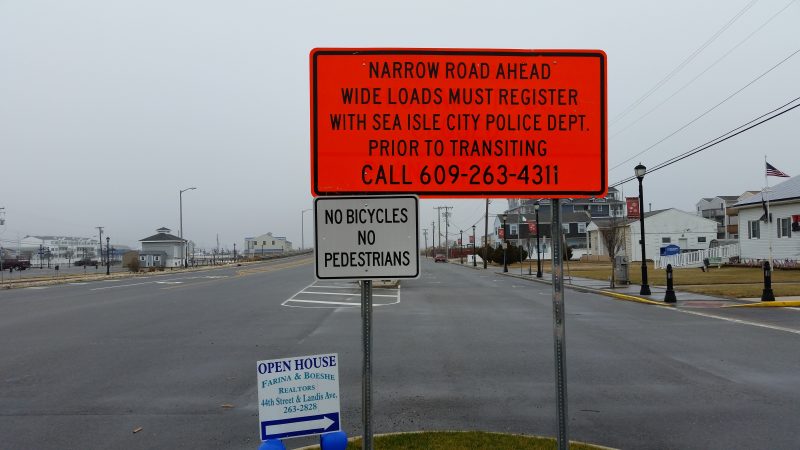
By Donald Wittkowski
Construction crews rebuilding the main entryway into Sea Isle City will face a tight deadline to finish paving the new road before all work must stop for six months as part of environmental restrictions that protect migratory birds.
Paving on Sea Isle Boulevard was originally expected to begin in January, but it now appears the work will be pushed back until March because of delays in completing a new gas main that will run underneath the road, Cape May County engineer Dale Foster said.
“We were hoping the gas company would be done by now,” Foster said in an interview.
The delay in completing the gas line means that construction crews will have only a narrow window to finish the paving before all work must come to a halt on March 15 to protect the ospreys that arrive in the spring to make their nests in the surrounding marshlands.
The environmental permits for the project prohibit construction between March 15 and Aug. 15 during the birds’ nesting season. Construction is not allowed within 1,000 feet of the nests during that time. Ospreys are classified as a threatened species by the state.
Complicating matters even more are potential weather-related difficulties. In order for paving to be done, the ground can’t be frozen and the temperature must be at least 40 degrees, Foster explained.
“If the weather cooperates, we’ll be able to get the paving done by then,” he said, alluding to the March 15 deadline.

Sea Isle Boulevard is being reconstructed between the northbound entrance to the Garden State Parkway and the Ludlam Thorofare Bridge. It is the main gateway for Sea Isle and serves as the island’s storm evacuation route.
The $12.7 million project will raise the boulevard by 4.5 feet, creating a much higher and drier evacuation route than the low-lying road that exists today.
“Basically, this will provide better access when we get into high tide and during storm events,” Foster said.
The multifaceted project, which began in 2014, is being done in phases. The current phase includes paving the road and shifting traffic onto the newly built elevated portion. Originally, crews were supposed to pave the new road in January and have it open by February, Foster said.
Now, the paving and the switch-over won’t be done until March, barring further delays or weather problems.
The elevated roadway is being built on top of what is now a dirt embankment about 1.7 miles long. The massive embankment is currently tucked behind concrete construction barriers on the north side of the road.

The low-lying south side of the roadway that currently serves as Sea Isle Boulevard will also be elevated by 4.5 feet. Huge mounds of dirt were supposed to be added to that side of the road in 2017, but Foster said the latest delays will push back that part of the project between six and eight months.
The dirt will sit there in 2017 and 2018 to go through a process known as “surcharging,” which will allow it to become compact enough for the next part of the elevated road to be built on top of it.
The county had hoped to complete construction on that portion of the road by 2019, about a year ahead of schedule. The delays, though, suggest that the original 2020 target date for completion is more likely, Foster said
Reconstruction of Sea Isle Boulevard also will include new bulkheading at Sunk’s Creek to help protect the roadway from erosion. The bulkhead work will also create public access to fishing areas along the creek, Foster said.
Diamondback terrapins will also benefit from the road project. New fencing will be installed to prevent the turtles from venturing on the roadway and being crushed by cars, as they often are now. Culverts built underneath the road will provide a safe route for the diamondbacks as they make their way out of the marshlands to nest in sandy soil.
The final phase of the project involves wetlands mitigation and should wrap up by the spring of 2020. As part of the project’s environmental permits, new wetlands must be created to replace those that were filled in during road construction.








